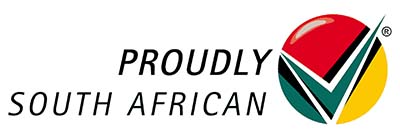Here’s how to manage asset maintenance effectively:
- Assess Your Assets
- Develop a Maintenance Plan
- Preventative Maintenance
- Training and Skill Development
- Asset Tracking and Management Software
- Compliance with Regulations
- Vendor Relationships
- Monitor and Evaluate
Effective asset maintenance management is crucial for ensuring the long-term reliability, performance, and safety of an organization’s assets.
A well-structured maintenance plan can help reduce downtime, minimize repair costs, and extend the lifespan of assets, ultimately contributing to operational efficiency and cost savings.
Key Facts
- Effective asset maintenance management is essential for long-term asset reliability and operational efficiency.
- Assess your assets and prioritize them based on criticality and impact.
- Develop a well-structured maintenance plan to reduce downtime and extend asset lifespan.
- Implement preventative maintenance with regular inspections to catch problems early.
- Invest in training and skill development for maintenance staff.
- Utilize asset tracking software to streamline maintenance processes.
- Stay compliant with South African regulations related to asset maintenance.
- Build reliable vendor relationships and leverage local expertise.
- Continuously monitor and evaluate maintenance performance for improvement.
- People-first approach is key for successful asset maintenance in South Africa.
Managing Asset Maintenance
1. Assess Your Assets
Start by making a list of all your assets, from machinery to buildings.
Prioritize them based on their criticality and impact on your operations.
2. Develop a Maintenance Plan
- Create a comprehensive maintenance schedule that covers all your assets.
- Consider budget constraints and available resources to ensure a realistic plan.
3. Preventative Maintenance
- Regular inspections and servicing are essential to catch problems early.
- Identify and address issues proactively, reducing downtime and costly repairs.
4. Training and Skill Development
- Invest in training for your maintenance staff, keeping them up to date with the latest techniques.
- Empower your team to maintain assets effectively and safely.
5. Asset Tracking and Management Software
- Implement asset tracking software to efficiently monitor and manage your assets.
- Streamline maintenance processes, reducing paperwork and improving accuracy.
6. Compliance With Regulations
- Stay informed about South African regulations related to asset maintenance.
- Ensure your maintenance practices are compliant to avoid legal issues.
7. Vendor Relationships
- Cultivate relationships with reliable maintenance service providers.
- Leverage local expertise and resources for better maintenance results.
8. Monitor and Evaluate
- Regularly review your maintenance performance and adjust your plan as needed.
- Use data and feedback to fine-tune your maintenance strategy for continuous improvement.
Conclusion
In South Africa, effective asset maintenance isn’t just about machines and buildings; it’s about people, reliability, and efficiency.
By implementing proactive maintenance, training, software, compliance, vendor relations, and monitoring, you can ensure optimal asset performance.
Remember, asset maintenance isn’t just a checklist; it’s an ongoing process that’s vital to the success of your business in South Africa.
Start today, and you’ll see the benefits of a well-maintained asset management strategy in action.
By implementing these strategies and taking a people-first approach, your asset maintenance in South Africa can thrive, supporting your business and ensuring a smoother, more reliable operation.








